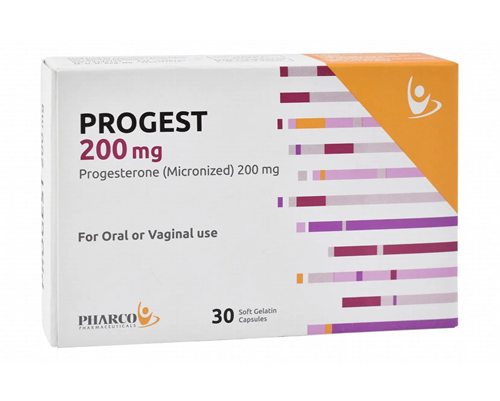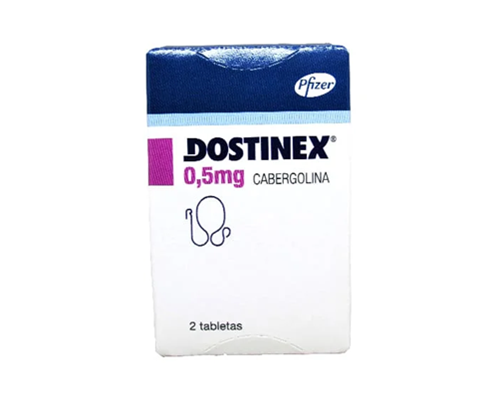Description
Trade name:
Duphaston
Compound:
Each tablet contains:
Dydrogesterone 10 mg
Auxiliary components:
lactose monohydrate, hypromellose, corn starch, colloidal silicon dioxide, magnesium stearate.
Properties:
Analogue of natural progesterone. Dydrogesterone is very close to natural progesterone in its molecular structure, chemical and pharmacological properties. Due to the fact that dydrogesterone is not a testosterone derivative, it does not have the side effects characteristic of most synthetic progestogens, the so-called “androgenic” progestogens. Dydrogesterone does not have estrogenic, androgenic, anabolic, glucocorticoid and thermogenic activity.
As a progestogen component of HRT in menopause, dydrogesterone helps to maintain the beneficial effect of estrogens on the blood lipid profile. However, unlike estrogens, which usually have a negative effect on the blood coagulation system, dydrogesterone does not affect coagulation parameters. It does not have a negative effect on carbohydrate metabolism and liver function. Dydrogesterone, when administered orally, selectively affects the endometrium, thereby preventing an increased risk of endometrial hyperplasia and/or carcinogenesis in conditions of excess estrogens. It is indicated in all cases of endogenous progesterone deficiency.
Dydrogesterone has no contraceptive effect. When treated with dydrogesterone, the therapeutic effect is achieved without suppressing ovulation or disrupting menstrual function. Dydrogesterone makes it possible to conceive and maintain pregnancy during treatment.
Indications:
Progesterone deficiency: endometriosis; infertility due to luteal insufficiency; threatened or habitual miscarriage (with progesterone deficiency); premenstrual tension syndrome; dysmenorrhea, irregular menstrual cycle; secondary amenorrhea (in combination therapy with estrogens); dysfunctional uterine bleeding.
HRT: to neutralize the proliferative effect of estrogens on the endometrium in women with disorders due to natural or surgical menopause with an intact uterus.
Method of administration and dosage:
Inside. The dose and treatment regimen are set individually, depending on the indications. The duration of therapy and doses can be adjusted taking into account the individual clinical response of the patient and the severity of the pathology.
Contraindications:
Hypersensitivity to dydrogesterone; diagnosed or suspected progestogen-dependent neoplasms (eg, meningioma); vaginal bleeding of unknown etiology; liver dysfunction due to acute or chronic liver disease, currently or in history (until normalization of liver function tests); malignant liver tumors, currently or in history; breastfeeding period; porphyria, currently or in history; age under 18 years.
When combined with estrogens (HRT): untreated endometrial hyperplasia; arterial and venous thrombosis, thromboembolism currently or in history (including deep vein thrombosis, pulmonary embolism, myocardial infarction, thrombophlebitis, cerebrovascular disorders of hemorrhagic and ischemic type); identified predisposition to venous or arterial thrombosis (resistance to activated protein C, hyperhomocysteinemia, antithrombin III deficiency, protein C deficiency, protein S deficiency, antiphospholipid antibodies (antibodies to cardiolipin, lupus anticoagulant).
With caution: depression, current or in history; conditions that have previously appeared or worsened during a previous pregnancy or previous use of sex hormones, such as cholestatic jaundice, herpes during pregnancy, severe pruritus, otosclerosis.
Precautions:
Before starting treatment with dihydrosterone for abnormal uterine bleeding, it is necessary to determine the cause of the bleeding. With prolonged use of dihydrosterone, periodic examinations by a gynecologist are recommended, the frequency of which is determined individually, but not less than once every 6 months. In the first months of treatment for abnormal uterine bleeding, “breakthrough” bleeding or spotting may occur. If “breakthrough” bleeding or spotting occurs after a period of taking dihydrosterone or continues after a course of treatment, you should contact your doctor and undergo appropriate additional examination, if necessary, do an endometrial biopsy to exclude neoplasms in the endometrium.
Side effects:
From the hematopoietic system: rarely – hemolytic anemia.
From the nervous system: often – migraine/headache; uncommon – dizziness; rare – drowsiness.
From the mental side: uncommon – depressive mood.
From the digestive system: often – nausea; uncommon – vomiting.
From the liver and biliary tract: uncommon – liver dysfunction (with jaundice, asthenia or malaise, abdominal pain).
Allergic reactions: uncommon – allergic dermatitis (eg, rash, itching, urticaria); rare – Quincke’s edema, hypersensitivity reactions.
From the reproductive system: often – menstrual cycle disorders (including metrorrhagia, menorrhagia, oligo-/amenorrhea, dysmenorrhea and irregular menstrual cycle); soreness/sensitivity of the mammary glands; rarely – swelling of the mammary glands.
Others: uncommon – weight gain; rare – edema, increase in the size of progestogen-dependent neoplasms (eg, meningioma).
Storage method:
At a temperature not exceeding 30 degrees. In a dry place.









